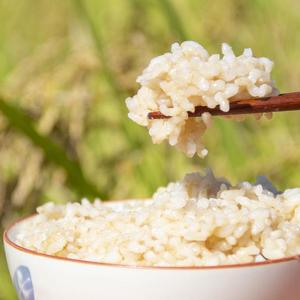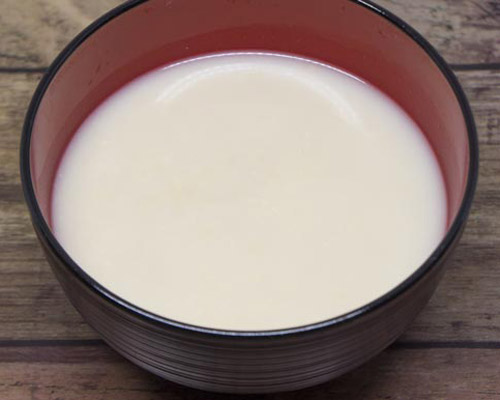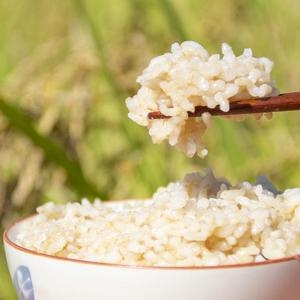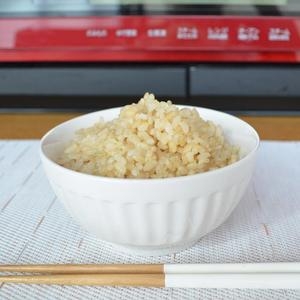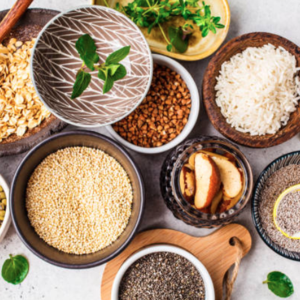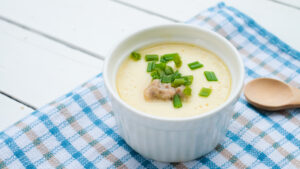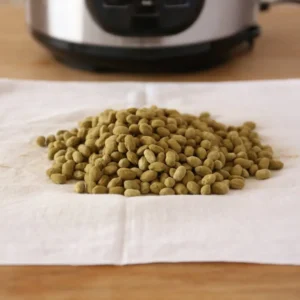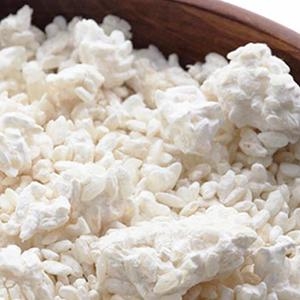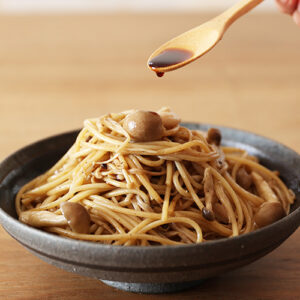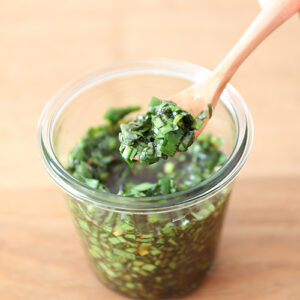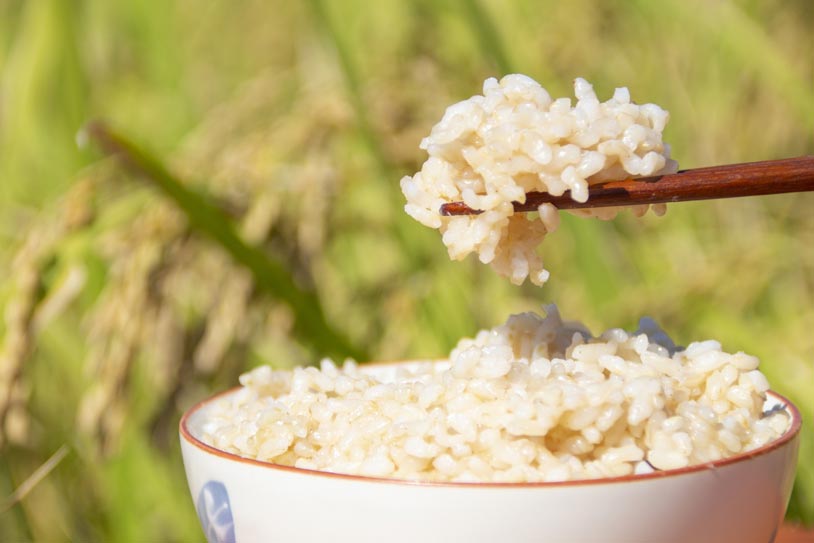
There are many types of rice we can identify—white rice, black rice, sticky or glutinous rice, long-grain jasmine rice, and basmati rice, etc. They are all carbohydrates and necessary as an energy provider in our body. However, each rice has different nutritional content from one another.
Brown rice has hit the spot as the nutritious, high fiber whole-grain that promotes healthy diet.
How can brown rice be considered healthy carbs? And is it good for weight loss?
Find the nutrition facts and health benefits of brown rice explained in this article (complete with healthy brown rice recipe ideas).
Contents List
- What is Brown Rice?
- Is Brown Rice Good for Weight Loss?
- Is Brown Rice Gluten Free?
- Brown Rice Nutrition Facts
- Brown Rice Health Benefits
- Healthier Version of Brown Rice: Enzyme Brown Rice
- Arsenic in Rice: How to Reduce it?
- Healthy Brown Rice Recipes
- 1. Vegan Brown Rice Risotto
- 2. Brown Rice Egg Porridge
- 3. Brown Rice Amazake
- Brown Rice Nutrition Q&A
- Recommended Products for Brown Rice
What is Brown Rice?
We all know that rice (Oryza sativa) is the well-known consumed staple food, especially in Asia and Africa. Using rice, we can enjoy a delicious meal packed with carbohydrates necessary for daily diet.
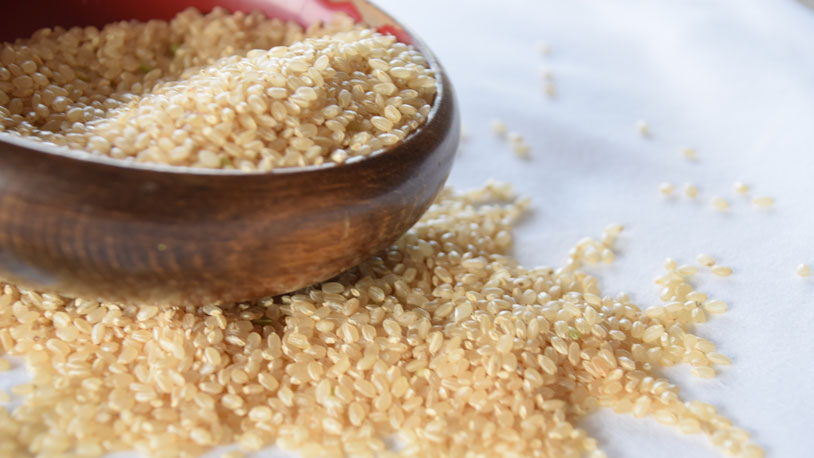
Brown rice is whole-grain rice which only the husk (the inedible outermost layer of grain) removed, meaning that it contains rice bran, rice germ, and endosperm. Brown rice is the same plant as white rice, but with a different structure.
Because of its structure, brown rice has a yellowish to brown color, a rather dull color compared to white rice. It has a nutty, earthy taste with a chewier texture.
On the other hand, white rice is a refined grain which only has the endosperm left. The milling process removes the rice husk, bran, and germ together with its potential nutrients attached. That is why white rice has a bright white color. It has a stickier and starchier texture, with a soft and milder taste.
Read this article below to learn the difference and nutrient facts comparison between brown rice and white rice.
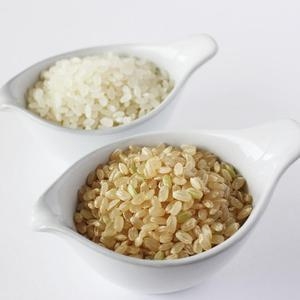
Brown rice is often associated with a healthy diet.
This statement is not completely wrong, as brown rice showed nutritious components as a whole grain that might provide potential health benefits.
However, please be aware that consuming brown rice will only be significant for your health when accompanied by a consistent well-balanced diet and healthy lifestyle.
Is Brown Rice Good for Weight Loss?
According to our literature research, brown rice doesn’t have a direct effect on weight loss. Consuming brown rice rather than white rice, white pasta, or white bread, however, can adjust bodyweight gain and prevent yourself from obesity.
Brown rice has 4-5 times higher fiber content than white rice, which could help you feel fuller over some time. It is also packed with more vitamins and nutrients needed for healthy dieting.
Together with a well-balanced diet and plenty of exercise, consuming brown rice should give you more benefits in terms of weight loss.
In terms of calorie and carbs content, each of them has a similar number.
We will discuss this further in our brown rice health benefits section, so please check it out.
Improve Brown Rice’s Nutrition with Its Preparation Method
Let’s heightens the nutrition of brown rice further by making more effort in preparing the brown rice.
WHAT SHOULD YOU DO:
Try germinating the washed, uncooked brown rice in water for a minimum of 12 hours. This process allows the rice to breaks down the sugar and protein contents, thus transforming it into sprouted/germinated brown rice. Next, cook the sprouted brown rice with any methods you like for cooking rice (rice cooker, instant pot/pressure cooker, or the microwave).
WHAT WILL YOU GET:
● Heightens brown rice nutritional components
● Softer brown rice texture
● My favorite reason: makes the taste even more delicious and easy to eat
If you’re interested more in how to make your brown rice more nutritious, please read these articles below!
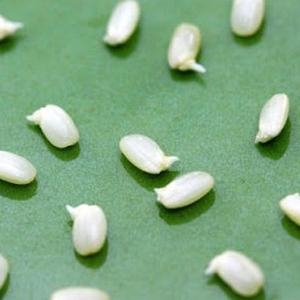
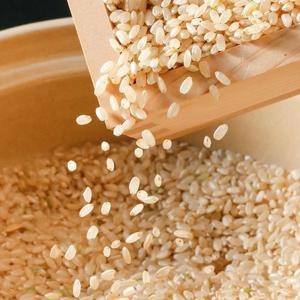
Is Brown Rice Gluten Free?
Brown rice is naturally gluten-free ingredients.
Some people nowadays are allergic to gluten or have an intolerant to gluten-containing foods, called celiac disease. That is why consuming brown rice is the safe choice for people intolerant to gluten and people with celiac disease.
It also offers health benefits, which became one of brown rice’s charm.
The gluten-free food demand is increasing, especially in The United States, which makes the gluten-free diet and lifestyle is known worldwide. Because of that, many gluten-free processed foods using brown rice such as brown rice flour and brown rice pasta is available today.
Brown Rice Nutrition Facts
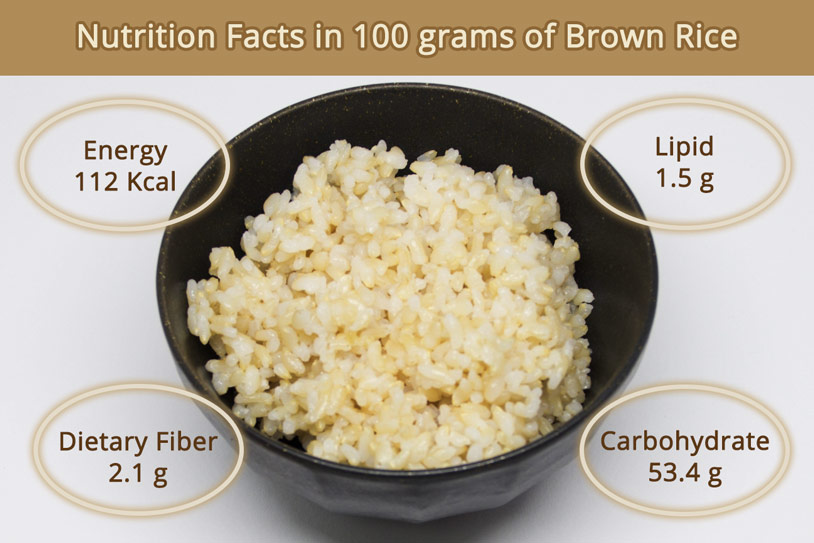
A 100 grams of cooked brown rice has 112 Kcal energy, 53.4 g carbohydrate, 1.5 g lipid, 2.1 g dietary fiber, along with abundant protein, minerals, and vitamins.
These components are essential for our body to gain several health effects in a moderate intake, together with healthy diet habits.
Other types of rice contain similar nutritional facts, but brown rice components are more superior to white rice.
Nutrition Facts Comparison for Brown Rice and White Rice
Let’s take a look at the nutrition facts for both brown rice and white rice.
By comparing both, it’s easier to determine which type of rice is healthier for us.
| Nutrition | Cooked Brown Rice (100 grams) |
Cooked White Rice (100 grams) |
|---|---|---|
| Energy | 112 Kcal (source) | 130 Kcal (source) |
| Carbohydrate | 53.4 g | 55.5 g |
| Protein | 4.2 g | 3.8 g |
| Lipid | 1.5 g | 0.5 g |
| Dietary Fiber | 2.1 g | 0.4 g |
| Vitamin B1 | 0.24 mg | 0.03 mg |
| Vitamin B2 | 0.030 mg | 0.015 mg |
| Vitamin E | 0.8 mg | 0.8 mg |
| Potassium | 143 mg | 44.3 mg |
| Calcium | 11 mg | 4.7 mg |
| Magnesium | 74 mg | 10.4 mg |
| Zinc | 1.2 mg | 0.9 mg |
| Iron | 0.9 mg | 0.2 mg |
* The diagram represents the comparison between 100gr brown rice and 100gr white rice.
* Diagram Source: Nihon Shokuhin Hyoujun Seibunhyou 2015-nenban (Standard Diagrams of Japanese Food Composition 2015 7th edition)
* Book Source: Doku Dashi Koso Genmai Daietto (Brown Rice Detox Diet) by Okamoto Uka
Note: Please use this information for reference. Each manufacturer has its own nutritional value.
As shown above, both have similar amount of calories and carbs.
However, brown rice offers more nutritious ingredients such as potassium, calcium, magnesium, vitamin B, and vitamin E. Brown rice also has relatively 4-5 times more dietary fiber than white rice.
Brown Rice Health Benefits
Brown rice is already convenient because of its gluten-free traits. Let’s talk more about its health benefits in this section.
Brown rice and its processed products are identified to have anti-obesity components, anti-diabetic and cholesterol-lowering effects. Studies also identified brown rice to have potential anticancer and anti-inflammatory effects.
Here are some health benefits of brown rice:
Health Benefits 1 Helps to Keep You Fuller for Healthy Weight

Brown rice is a whole-grain that has 4-5 times more dietary fiber than white rice. Of course, brown rice has more fiber compared to white pasta and white bread.
In general, high-fiber food offers so many health benefits. High dietary fiber in brown rice will control the energy intake in your body by keeping you fuller over a longer time. It also helps relieve constipation and improve the digestive system. Choosing to eat high-fiber food, thus, could reduce the risk of obesity and maintain your healthy weight.
Moreover, previous studies stated that a daily intake of brown rice successfully repairs and control bodyweight gain. Brown rice is also abundant with γ‐Oryzanol, which is a promising anti-obesity component.
Obesity may lead to many chronic diseases such as diabetes, hypertension, cardiovascular disease, and cancer. Consuming brown rice may be a good start in implementing a healthy diet for achieving ideal body weight.
Source:
Effects of the brown rice diet on visceral obesity and endothelial function: the BRAVO study
Health Benefits 2 Prevent the Risk of Heart Disease and Cardiovascular Disease

Studies have shown that high-fiber foods and food with a high antioxidant compound like brown rice, red rice, and black rice may aid heart health, such as reducing blood pressure and inflammation.
The generous amount of magnesium in brown rice also helps to maintain heart health by keeping the heartbeat steady and has anti-inflammatory benefits. Magnesium also supports the immune system to keep you healthy.
The subaleurone layer in half-milled rice or brown rice offers protection against high blood pressure and atherosclerosis. Through this research, we discovered that fewer people died because of cardiovascular disease in Japan, where people eat at least one bowl of rice per day. So it’s better to consume half-milled rice or brown rice as part of the diet.
Health Benefits 3 Prevent the Risk of Several Types of Cancer

Consuming brown rice could offer protection against some cancers that is colon cancer and breast cancer. Brown rice is rich in fiber and antioxidant content. The fiber content can bind itself to cancer-causing toxics, which eliminates them from the body.
The bran in brown rice contains essential phenols such as tricin, ferulic acid, and caffeic acid. These phenols may disturb the proliferation of colon and breast cancer cells. The study concludes that the consumption of brown rice may be beneficial to cancer prevention.
It proved that whole grain (like brown rice) is beneficial that makes the number of cancer cases in the highest rice consumption area is small. However, due to the geographic differences in rice’s arsenic content, it is safe to consume rice moderately to prevent cancer.
Health Benefits 4 Brown Rice is Good for Diabetics

Brown rice and sprouted brown rice suggested as effective foods for the prevention and treatment of type 2 diabetes.
It said that people with diabetes need to reduce their carbohydrate intake or choose a low Glycemic Index (GI) food.
Brown rice can reduce the impact of the post-meal blood sugar level. That is because brown rice has a lower Glycemic Index than white rice. Brown rice has an average GI of 68, while white rice has an average GI of 73 (from the maximum 100 GI). More facts: sprouted brown rice could have a lower GI than brown rice!
In addition, consuming brown rice could reduce the chances of developing type 2 diabetes in the first place. Let’s try swapping our white rice intake to brown rice for better health!
Source:
White rice, brown rice, and risk of type 2 diabetes in US men and women
Does Brown Rice Contains Anti-Nutrient Contents?
Brown rice shows many health benefits for our body, but some contents of brown rice are referred to as anti-nutrient or toxic.
The presence of the natural plant hormone in brown rice called Abscisic Acid makes it harder for the body to digest. Brown rice also contains the anti-nutrient called phytic acid that is naturally attached to the minerals. The phytic acid prevents the absorption of minerals by binding to them before your body can absorb them.
Luckily, soaking, sprouting (germinating), and fermenting your rice could reduce phytic acid and abscisic acid content in brown rice. The germinated brown rice is called Sprouted Brown Rice, while the fermented brown rice is called Enzyme Brown Rice/Koso Genmai.
Healthier Version of Brown Rice: Enzyme Brown Rice
We explained about sprouted brown rice earlier in this article here.
Koso Genmai or Enzyme/Fermented Brown Rice is the healthier, innovative version of sprouted brown rice. You can make it by cooking sprouted brown rice with Azuki beans (red beans) and salt, then fermenting or keeping it warm for 2 to 3 days.
Koso Genmai has chewier texture and more umami flavor than the usual brown rice.
Japanese usually eat it during a diet for its nutritious values.
Some restaurant menus in Japan also include Koso Genmai as one of their rice choices. That shows popularity in one fact, isn’t it?
Preparing Koso Genmai needs more time and effort, but it is worth to try.
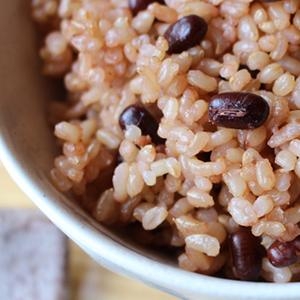
Arsenic in Rice: How to Reduce it?
What is an arsenic? And why we need to know about arsenic before consuming a rice?
Arsenic is a metal element that is naturally present in the soil, water, and air and it is absorbed by food crops as they grow. Rice seems to absorb it the most compared to other eaten foods. The number of arsenic is possibly increasing in some cultivation areas due to pollution. Arsenic also can appear because of human activity, such as mining and using pesticides when planting.
There are two types of arsenic: organic and inorganic arsenic. These classifications are based on their carbon chemistry and are not affected by the method of farming. Inorganic arsenic is the most toxic form and is associated with adverse health effects.
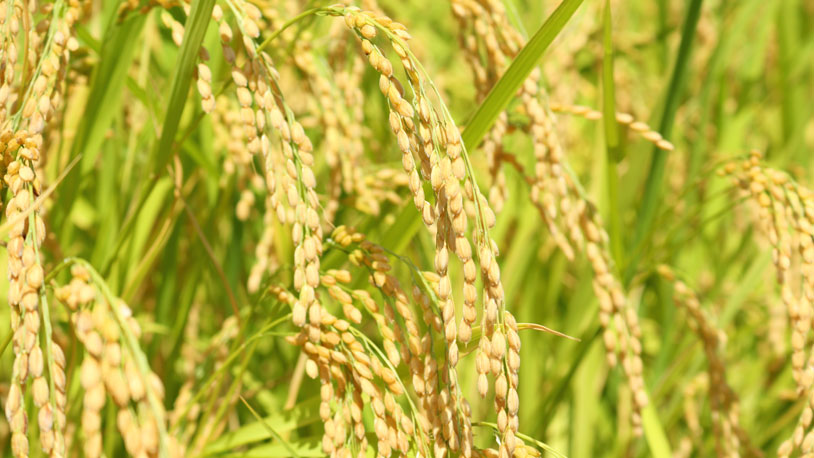
In short, arsenic is toxic. High levels of long-term consumption of inorganic arsenic may be linked to chronic disease and cause damage to multiple organ systems such as the stomach, kidney, liver, and heart. Yes, it’s very concerning.
According to a study, brown rice contains more arsenic than white rice. That is because arsenic is contained in the bran part of the grain. That said, it should not be a problem if you eat rice in moderation. (Again, please remember that brown rice has more nutrients than white rice).
The arsenic content in rice can vary according to the type of rice, its cultivation area, how it has been processed, and how it has been cooked.
Source:
Speciation and localization of arsenic in white and brown rice grains
How to Reduce Arsenic in Rice?
If you eat rice as part of your daily meal, you may want to know how to reduce the arsenic content in rice. Consider to try these methods to reduce the arsenic concentration in rice:
● Wash and rinse the rice thoroughly with fresh water. Make sure it is clear enough before you cook it.
● Soak the rice overnight. This method will open up the grain and allows the arsenic to escape.
● Use the high volume of water:rice (6:1) in cooking to remove up to 45% inorganic arsenic. This ratio is perfect if you want to cook brown rice that is high in fiber.
Healthy Brown Rice Recipes
You can enjoy brown rice in a healthy way with these few ideas.
First, match the warm cooked brown rice together with delicious, healthy side dishes. Try to eat brown rice alongside miso soup, natto, tofu, tempeh, fish, stir-fry veggies, etc.
Second, use it to make vegetarian brown rice recipe. We will share the recipe for Vegan Brown Rice Risotto, so please check it out!
Lastly, brown rice is perfect for porridge. Its nutritional contents will enrich the charm of the porridge. You can also try to make Brown Rice Amazake for a healthy drink or as a sweeteners substitute.
Vegan Brown Rice Risotto Recipe
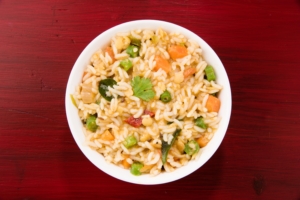
Vegan Brown Rice Risotto
Ingredients
- 390 g Brown Rice (uncooked, short-grain)
- 900 ml Vegetable broth
- 1200 ml Water
- 2 tbsp Olive oil
- 1 cup Asparagus (cut to 2.5 cm each)
- 1 cup Micro tomato
- ½ cup Soybeans
- 2 cloves Garlic (finely chopped)
- 4 tbsp Onion (finely chopped)
- Salt and pepper (to taste)
Instructions
- Bring vegetable broth and water to a boil in a pan over high heat.
- In the same pan, add the washed asparagus and soybeans. Bring the heat to medium heat and simmer until tender (3-4 minutes). Drain and set aside for later.
- While waiting for the broth mixture to boil, heat olive oil in a skillet. Use medium heat. Cook and stir garlic and onion until softened and fragrant (about 4 minutes). Then, add and stir brown rice until toasted (about 5 minutes).
- Pour 250 ml hot broth mixture into the toasted brown rice, and stir it constantly or until the moisture is well-absorbed. Repeat the step until the rice becomes tender in your preference (can up to 45 minutes). Please keep the risotto mixture moist; if it gets dry, add hot water if necessary.
- Add boiled asparagus, boiled soybeans, and micro tomato into the risotto. Keep stirring for another 2-3 minutes.
- Season the cooked, tender brown rice risotto with salt and pepper.
- Serve the risotto while hot. Enjoy!
Brown Rice Egg Porridge Recipe
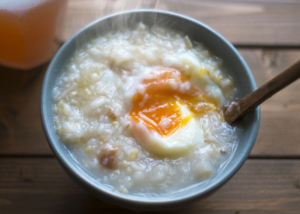
Brown Rice Egg Porridge
Ingredients
- 195 g Brown Rice (uncooked, short-grain)
- 5 Soft boiled eggs
- 960 ml Chicken stock
- 960 ml Water
- 1 tbsp Ginger (freshly minced)
- 1 tbsp Olive oil
- 1 tbsp Sesame oil
- 1 tbsp Soy sauce
- 1 tsp Salt (to taste)
- Green onion (chopped, for garnish)
Instructions
- Heat olive oil in a saucepan on medium heat. Sauté the chopped ginger for 2-3 minutes or until fragrant.
- In the same saucepan, add chicken stock, water, brown rice, and salt then bring them to a boil. To make it more effective, cover the saucepan with a lid. Simmer for 1 hour in low heat. Stir the mixture occasionally and make sure everything is mixed well.
- Make a soft boiled eggs when waiting for the brown rice to cook. Boil the egg in boiling water for 4-5 minutes (or 2-3 minutes if you like it half raw). Rest the boiled egg in ice water to stop the cooking process, and set aside.
- Check the simmered brown rice. The porridge is ready to serve once it is soft and gooey.
- How to serve 1 portion of porridge: spoon about 1 cup of porridge mixture to a bowl. Drizzle with ½ teaspoon soy sauce and ½ teaspoon sesame oil. Crack one soft boiled egg at the top, sprinkle it with green onion.
Brown Rice Amazake
Brown rice amazake is an amazake (sweet sake) made from combining brown rice and koji (Aspergillus Oryzae) by fermenting it. Amazake is a low-calorie drink that contains an antioxidant ingredients. This drink is popular among women because of its health and beauty effect.
Amazake is delicious to use as sweeteners substitute on smoothies. You can drink it regularly for healthy diet, too.
Check our recipe to make Brown Rice Amazake in the article below.
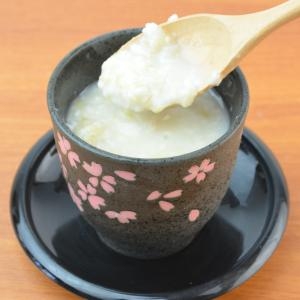
Brown Rice Nutrition Q&A
Find the article’s quick summary of every section using this Q&A.
- Is brown rice healthy?
- To keep it short: brown rice is generally healthy. To make its potential health benefits shows perfectly, balance your diet with other healthy ingredients together with plenty of exercises.
- Is brown rice good for weight loss?
- Brown rice can adjust bodyweight gain and prevent yourself from obesity due to brown rice’s anti-obesity components.
- Is brown rice gluten free?
- Brown rice is generally gluten-free (unless it is already processed with gluten-containing food). If you are not eating the general brown rice, please always double-check its ingredients to make sure you’re eating gluten-free food.
- How many carbs and calories in 1 cup of brown rice?
- Every 1 cup of short-grain cooked brown rice (approx. 200 grams) has 106.8 g carbohydrate and 224 calories.
- Brown rice vs white rice: which one is healthier?
- In overall aspects, brown rice is considered healthier than white rice.
Brown rice has the bran and germ part of the grain, which is the source of its nutrition. Meanwhile, white rice is milled and polished without the bran and germ part.
- What are the brown rice health benefits?
- 1. Helps to Keep You Fuller for Healthy Weight
2. Prevent the Risk of Heart Disease and Cardiovascular Disease
3. Prevent the Risk of Several Types of Cancer
4. Brown Rice is Good for Diabetics
- Brown rice glycemic index?
-
Brown rice has an average GI of 68, while white rice has an average GI of 73.
Glycemic index (GI) is a numeric ranking signed in food-containing carbohydrates that corresponds to how they convert into glucose (blood sugar) after consuming it.
The ranks are from 0-100. GI rank under 55 is considered as low, 56-69 is medium, and above 70 is high. A higher glycemic index in carb means it can easily be digested and could affect fluctuations in blood sugar. We recommend consciously choose the low GI carbs to reduce the risk of diabetes and maintaining a healthy diet.
- Can I improve brown rice’s nutrition?
- Yes, you can enhance the nutrition contents of brown rice with its preparation method.
Uncooked brown rice → Sprouted Brown Rice* → Koso Genmai (Enzyme Brown Rice/Fermented Brown Rice)***) Sprouted Brown Rice is germinating the washed, uncooked brown rice in water for a minimum of 12 hours.
**) Koso Genmai is cooked sprouted brown rice, azuki beans, and salt then let it fermented for another 2-3 days.
- How to reduce arsenic in brown rice?
- 1. Wash and rinse the rice thoroughly with fresh water
2. Soak the rice overnight
3. Use the high volume of water:rice (6:1) in cooking the rice
Recommended Products for Brown Rice
If you want to eat brown rice as fast as possible, kindly check Kawashima-ya’s original Koso Genmai retort pouch.

